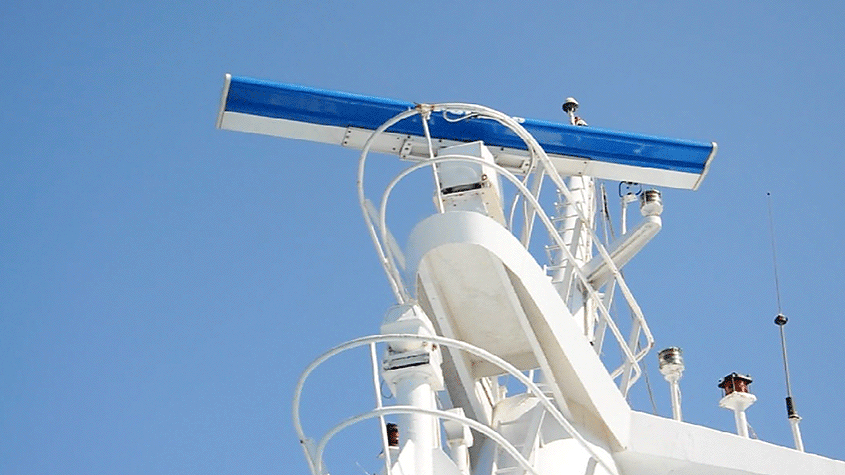marine radar on:
[Wikipedia]
[Google]
[Amazon]
 Marine radars are X band or S band
Marine radars are X band or S band
 Marine radar systems can provide very useful radar navigation information for navigators on board ships. The ship's position could be fixed by the bearing and distance information of a fixed, reliable target on the radar screen.
Marine radar systems can provide very useful radar navigation information for navigators on board ships. The ship's position could be fixed by the bearing and distance information of a fixed, reliable target on the radar screen.
Calculatoredge.com
{{Webarchive, url=https://web.archive.org/web/20111013182554/http://www.alphalpha.org/radar/intro_e.html#Portata%20non%20ambigua , date=2011-10-13
Macuait.comRadar in the 21st Century
Sea radars Navigational aids
 Marine radars are X band or S band
Marine radars are X band or S band radar
Radar is a system that uses radio waves to determine the distance ('' ranging''), direction ( azimuth and elevation angles), and radial velocity of objects relative to the site. It is a radiodetermination method used to detect and track ...
s on ships, used to detect other ships and land hazards, to provide bearing and distance for collision avoidance and navigation
Navigation is a field of study that focuses on the process of monitoring and controlling the motion, movement of a craft or vehicle from one place to another.Bowditch, 2003:799. The field of navigation includes four general categories: land navig ...
at sea. They are electronic navigation instruments that use a rotating antenna to sweep a narrow beam of microwave
Microwave is a form of electromagnetic radiation with wavelengths shorter than other radio waves but longer than infrared waves. Its wavelength ranges from about one meter to one millimeter, corresponding to frequency, frequencies between 300&n ...
s around the water surface surrounding the ship to the horizon, detecting targets by microwaves reflected from them, generating a picture of the ship's surroundings on a display. The X-Band and S-Band radar has different characteristics and detection capabilities compared with each other. Most merchant ships carry at least one of each type to ensure adequate target detection and response. For example, the S-band operates better in sea clutter and rain than the X-band, however, the X-band has greater definition and accuracy in clear weather.
Radar is a vital navigation component for safety at sea and near the shore. It allows a 'lookout' to be maintained, being one of the approved available means for compliance with Rule 5, keeping a proper lookout under the International Regulations for Preventing Collisions at Sea. Captains and the bridge teams of ships need to be able to maneuver their ships in close proximity to navigational hazards in the worst of conditions. These include a need to navigate "blind", when there is poor or no visibility at night or due to bad weather such as fog. In addition to vessel-based marine radars, in port or in harbour, shore-based vessel traffic service radar systems are used by harbormasters and coast guard to monitor and regulate ship movements in busy waters.
Collision avoidance
As required by COLREGS, all ships shall maintain a proper radar lookout if it is available on board to obtain early warning of risk of collision. Radar plotting with the use of an EBL and VRM, or the ARPA should be used to determine the information of movement and the risk of collision of other ships in vicinity. Information given to the user includes bearing, distance, CPA (closest point of approach) and TCPA (time of closest point of approach).Navigation
Radar controls
Marine radar has performance adjustment controls for brightness and contrast, also manual or automatic adjustment of gain, tuning, sea clutter and rain clutter suppression, and interference reduction. Other common controls consist of range scale, bearing cursor, fix/variable range marker (VRM) or bearing/distance cursor (EBL).Errors
Marine radars are subject to similar errors of other types of radar. These include radar plotting errors such as range errors, errors in bearing and the incorrect use of own vessel's data.Use with other equipment
Radars are rarely used alone in a marine setting. A modern trend is the integration of radar with other navigation displays on a single screen, as it becomes quite distracting to look at several different screens. Therefore, displays can often overlay an electronic GPS navigation chart of ship position, and a sonar display, on the radar display. This provides a combined view of surroundings, to maneuver the ship. In commercial ships, radars are integrated into a full suite of marine instruments including chartplotters, sonar, two-way marine radio, satellite navigation ( GNSS) receivers such as the USGlobal Positioning System
The Global Positioning System (GPS) is a satellite-based hyperbolic navigation system owned by the United States Space Force and operated by Mission Delta 31. It is one of the global navigation satellite systems (GNSS) that provide ge ...
(GPS), and emergency locators (SART). With digital data buses to exchange data, these devices advanced greatly in the early 21st century. For example, some have 3D displays that allow navigators to see above, below and all around the ship, including overlays of satellite imaging.
References
External links
Calculatoredge.com
{{Webarchive, url=https://web.archive.org/web/20111013182554/http://www.alphalpha.org/radar/intro_e.html#Portata%20non%20ambigua , date=2011-10-13
Macuait.com
Sea radars Navigational aids